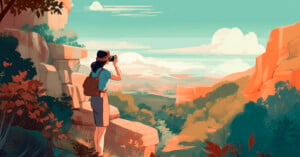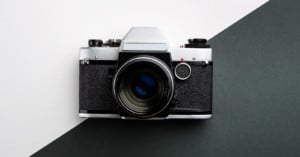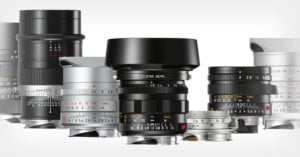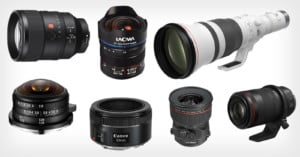
Symmetry in Photography: A Basic Guide for Better Compositions
Wherever you are right now, take a moment to look around. What patterns and shapes do you see? What objects, scenes, buildings, or other designs just look like they “make sense?”

Wherever you are right now, take a moment to look around. What patterns and shapes do you see? What objects, scenes, buildings, or other designs just look like they “make sense?”

Do your photos suck? Feeling discouraged by your photography lately? Not making the progress you expected? The good news is, it’s completely normal — all photographers grow at different rates and hit speed bumps along the way.

With the recent excitement surrounding the release of the film Oppenheimer, there have been lengthy discussions about the best way to watch it – mostly because of something called an aspect ratio and the way that it affects the viewing experience. This is a term that is used widely in film, and it’s just as important for photographers to understand.

One of the most exciting things to photograph is a live concert. Rock concerts in particular have an air of electricity about them that you can feel. When you are hired to photograph one you automatically feel like you are a part of that excitement.

Product photography is a major branch of commercial photography that is ubiquitous in our world, as product photos are used for everything from billboards and print ads to catalogs and store displays. If you'd like to learn how to become a product photographer, you've come to the right place.

Although many photographers approach it in different ways, understanding white balance is a key to getting better at photography. Like other camera settings, it’s possible to have your camera set white balance automatically, but it doesn’t always produce the best results.

Lens flare can appear as spots or streaks of light and color or as a washed-out hazy look in your photographs. Some photographers and filmmakers like to use it creatively, but it usually shows up as an unpleasant surprise that can ruin your picture.

Amazingly, in the age of AI image creation, film photography is not only popular but it's growing again after an initial decline. More and more, people are finding value in timeless, handcrafted imagery.

Producing a decent print is not as easy as you might think. You might get lucky and get a great result the first time. But, more likely, when you start printing your work, you’ll find it might not look as good as you’d hoped. Don’t give up. With a bit of practice and a better understanding of the process, you can quickly improve your printing.

When it was first introduced, many people sharply believed that autofocus would never have a clear place in the photography industry, puns intended. Why have a machine guess where to focus when you can just turn the focusing ring yourself? Today, autofocus systems are among the primary selling points for new camera and lens technology.

If you’re interested in photography and are trying to figure out where to start or how to grow, you’ve come to the right place. There’s a lot of information out there, how do you even determine what to focus on? Sometimes in trying to do too much we find ourselves accomplishing nothing.

In landscape photography, it is helpful to have three specific lens filters in your camera bag. These are the circular polarizer (CPL) filter, the neutral density (ND) filter, and the graduated neutral density filter (GND).

Printing your photography is a great way to display it, give it as a gift, and experiment with different ways to present your work. One aspect of printing that will inevitably come up is the type of paper that you want to print on -- should you choose glossy or matte?

Aerial photography can give viewers a unique perspective that differs from their everyday visual experience, and therefore can bring novelty to an image.

Zone focusing (ZF) is a great way to pre-set your camera's focus and aperture, then use that setting for multiple shots. Street shooters love it. And it's also great for sports, pets, jumpy kids, parties, or any subjects in motion.

An intervalometer is an important tool for photographers that is useful across a range of photography genres and techniques, including timelapses, focus stacking, and long exposures.

Film photography. It’s coming back, and more and more photographers are dusting off their old film cameras or going out on a search to purchase one. Many people don’t see the appeal and feel quite comfortable with their phone camera. But for others, it’s becoming the only way they create images.

There's more to consider than focal length and price when buying a new lens. Lenses come with an assortment of features such as stabilization and weather sealing, plus issues like distortion and bokeh.

Leica. The name conjures notions of luxury, history, quality, and precision. This especially applies to Leica’s M-mount lenses. While some of Leica’s latest camera bodies like the M11 have gathered praise, the lenses have set the industry gold standard.

Light painting has become a popular technique in the age of digital photography. If you have always wondered how to do light painting photography yourself, you've come to the right place.

We all have been there at some point in our photographic journeys: Our cameras, set to AUTO, pointing and clicking, saving JPEG images that we perhaps edit a little and put in an album to archive. Maybe we throw on an Instagram filter to fancy it up for social media. Then we forget about these images for a while.

Even though we are firmly ensconced in the digital age when it comes to photography, analog photography has picked up steam in popularity and doesn’t seem to be slowing down.

Most digital cameras from the 2000s and 2010s are equipped with an optical element called an optical low-pass filter (OLPF), also known as an anti-aliasing (AA) or blur filter. As the name "filter" suggests, this optical element filters out some information coming from the imaged scene.

Mood boards are more than a random collection of photos found online. If you want successful photoshoots that deliver what you, your client, or your team envisioned, mood boards can help you. All it takes is some brainstorming and curation.

I think photography educators teach and talk about photography to beginners in an overly complicated way. It’s all concepts, jargon, theories, and numbers. It should be focused on composition and how to take ‘better’ photographs as this is what most beginners join courses to learn.

Back in the days of film photography, things weren’t quite as advanced as they are in our modern digital era. Photographers struggled to manipulate available light or had to work a lot harder to capture simple in-camera effects. That was the reason for the invention of photographic lens filters.

In the photographic arms race, mirrorless systems are on the rise, having pushed DSLRs into the history books. But, just as film isn’t dead, neither are rangefinders. This seemingly obsolete design remains sharp, fast, and challenging enough to suit even the most confident photographers.

When compared to the other components of the exposure triangle (shutter speed and aperture), ISO appears to be the most intuitive on the surface. It is also the most misunderstood component, and everything from its definition to its usage has been discussed extensively.

There are many types of camera lenses out there, and it can be a bit confusing and even frustrating trying to sort it out because not every lens will be right for the type of photo you are trying to capture in a particular situation.

Photojournalism tells a story not in thousands of words but in a series of photos. Just as a written news story presents a complete picture by providing an overview, a thesis, subjects, and various points of view, photojournalism achieves this same objective pictographically.

As perhaps the most important parameter to understand in photography, shutter speed should be one of your first considerations when making a photograph. It’s one of the biggest reasons that photographers might find themselves unhappy with their shots, and having a great understanding of it is crucial to making great images.

If it seems like there’s more new photography technology than what you can keep up with, you are probably correct. However, don’t let that deter you from learning the industry standards and terms within it. One of those terms that you’ll likely come across is the digital single-lens reflex (DSLR) camera, which has been the leading type of camera for still photography throughout the past decade.

Aperture can seem like one of the most challenging camera settings to fully understand, but once you understand it, your photography will improve immensely.

For decades, there’s a piece of gear that I’ve always had in my camera bag. This would be a handheld light meter. I feel I’m in the minority these days by still using a handheld light meter and that’s too bad this is so.

Shooting dancers can be one of the most daunting photographic subjects but also one of the most rewarding in terms of the final images captured. Dance can be an unforgiving subject, and unless one delves deeper and tries to understand the movement, the choreography, the piece, and how to capture the light hitting the dancers, it will prove tough to achieve award-winning imagery.

There is a constant push for faster and lighter technology across different industries, including laptops, smartphones, drones, cameras, and more. In the photography world specifically, mirrorless cameras have appeared on top of the race to overtake DSLR cameras as the industry standard camera for still photography.

It's incredibly satisfying to capture awe-inspiring aerial shots with a drone, and while seeing the world from high above is always intriguing, some pilots make an exciting flight as big of a part of the experience as the beautiful scenery that's being highlighted.

A DNG file is a high-quality image format that is quite common even though it's a relative newcomer compared to some file types such as the TIFF format, which is decades older (2004 vs 1986, respectively).

Film set the photographic standard in more ways than one. The contact sheet, for example, once an essential aspect of the film process, has survived the transition to digital. Although it serves a slightly different purpose these days, the contact sheet can help you see the results of a shoot and make your best photos easier to share.

BeReal is a new social media network that puts a focus on authenticity. Others have made similar claims but this goal has proven difficult to achieve. This guide will look at what BeReal is and how to use it.